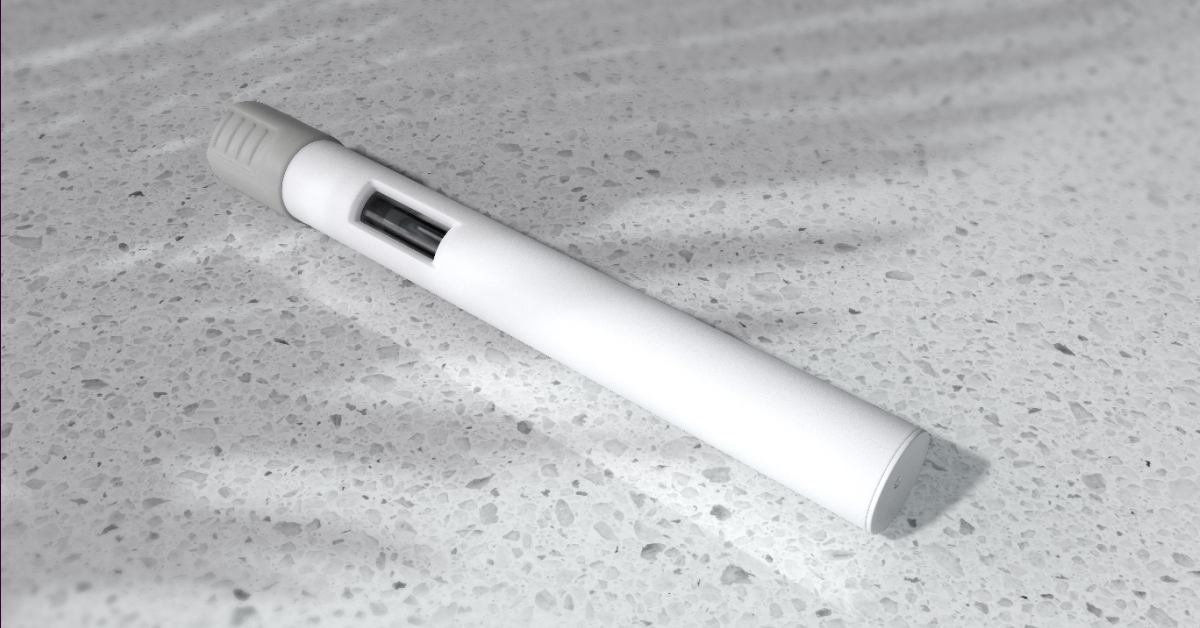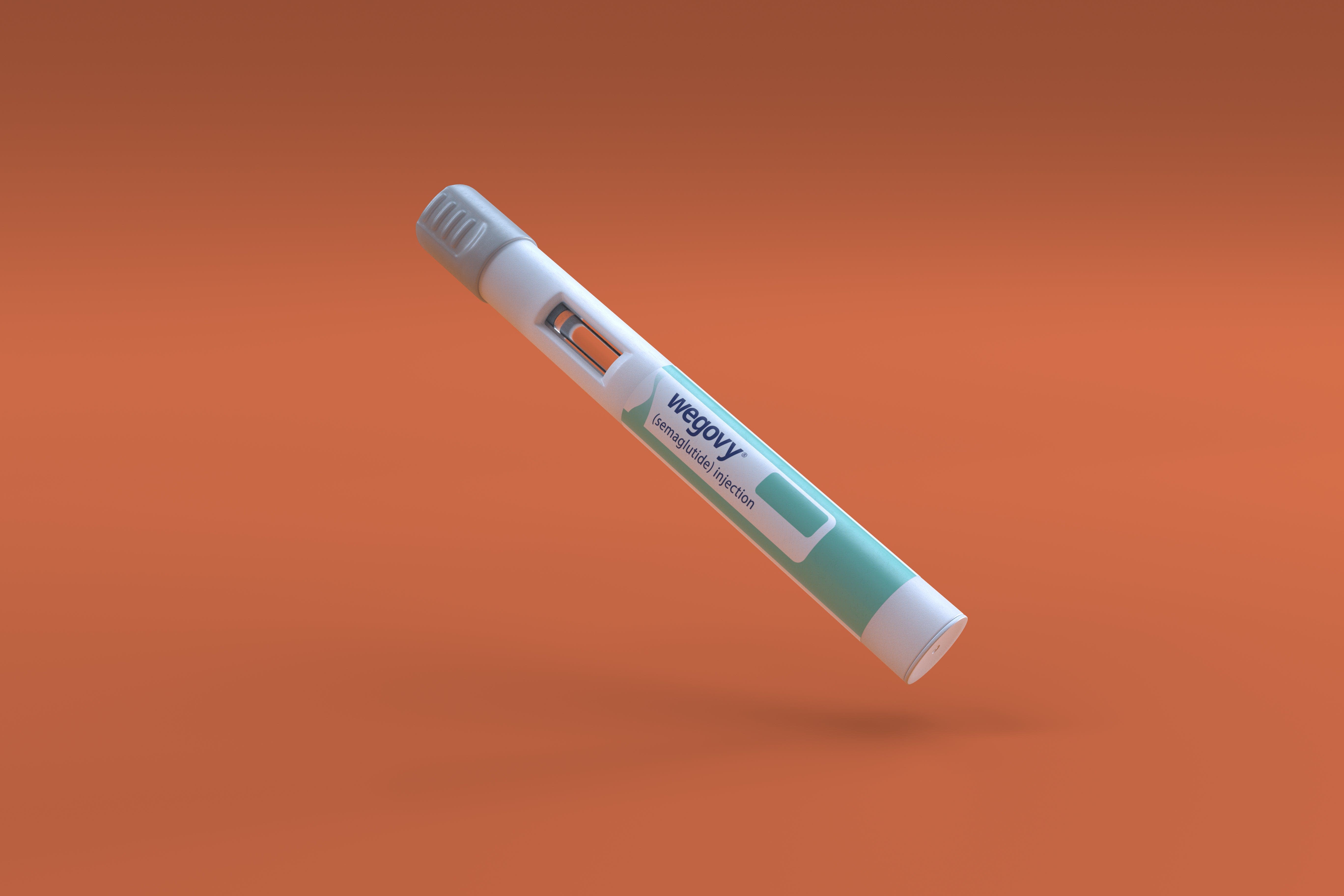What’s the difference between Wegovy and Mounjaro?


In this article:
3/ Do Wegovy and Mounjaro have generic versions?
4/ Key differences between Wegovy and Mounjaro
6/ Wegovy vs. Mounjaro dosages and administration
7/ Effectiveness of Wegovy vs. Mounjaro
8/ Wegovy vs. Mounjaro cost and insurance coverage
9/ Wegovy vs. Mounjaro side effects
10/ Wegovy and Mounjaro drug warnings
11/ The bottom line
While they’ve been around for over a decade, the growth of GLP-1s has mushroomed recently. And though they may look identical at first glance — liraglutide, semaglutide, tirzepatide — each ‘tide has its own truth and benefit. Take Wegovy vs. Mounjaro, for example. Are both GLP-1s? Yes. Are there some pretty major differences between them? Absolutely.
While your provider or virtual weight-loss clinic will ultimately guide you to the best GLP-1 for you, knowledge is power. So, with that, here’s what you need to know about Wegovy vs. Mounjaro.
What is Wegovy?
Wegovy is a brand name of the GLP-1 semaglutide that’s FDA-approved for weight loss. This drug is also prescribed under the brand name Ozempic, which is FDA-approved for type 2 diabetes.
Semaglutide mimics GLP-1, a hormone naturally produced by your body that helps manage your appetite, induces feelings of fullness, and slows the rate of gastric emptying. “GLP-1 has powerful appetite suppressant effects in the brain — enough to cause significant weight loss,” says Dr. Charlie Seltzer, M.D., an obesity specialist based in Philadelphia.
What is Mounjaro?
Mounjaro is also a GLP-1, a brand name for the drug tirzepatide that’s FDA-approved to treat type 2 diabetes. Zepbound is the brand name for the drug tirzepatide that’s FDA-approved for weight loss.
Unlike Wegovy for weight loss, Mounjaro’s GLP-1 is paired with a GIP, short for glucose-dependent insulinotropic polypeptide, which is another naturally occurring hormone that is produced in the gut. That combo gives Mounjaro a bit of a boost. “It helps to increase insulin to manage blood sugar and amplifies appetite suppressing effects when used in combination with GLP-1,” says Dr. Robert Kushner, M.D., professor of medicine and medical education at Northwestern University Feinberg School of Medicine in Chicago.
Do Wegovy and Mounjaro have generic versions?
Right now, there are no generic versions of either Wegovy or Mounjaro. This can contribute to their relatively high price tag (generics often are sold at much lower prices than brand name versions of drugs).
Key differences between Wegovy and Mounjaro
The biggest differences between Wegovy and Mounjaro — beyond their FDA-approved uses and active ingredients — is that Mounjaro has GIP in addition to GLP-1.
“We know that the GIP makes the GLP-1 work better,” says Seltzer, for instance, by suppressing your appetite more than GLP-1 alone. In addition to that, GIP has its own functions in the body: “The GIP targets white adipose tissue, which is an inflammatory type of fat,” says Dr. Holly Lofton, M.D., professor of medicine and surgery at NYU Grossman School of Medicine and the director of the medical Weight Management Program at NYU Langone Health in New York City. This can improve the function of white adipose tissue, which ultimately helps with triglyceride levels and blood sugar.
Wegovy vs. Mounjaro uses
Wegovy treats obesity, whereas Mounjaro is approved for those with type 2 diabetes as a way to control blood sugar. Wegovy also has FDA approval for adults who’ve had a previous cardiac event, since it may prevent a second heart attack or stroke, says Lofton. While Mounjaro doesn’t have an additional approval yet, it has shown promise for improving cardiovascular disease.
Wegovy vs. Mounjaro dosages and administration
Wegovy and Mounjaro behave pretty similarly in terms of how you take the medicine and how much medicine is in each dose. “Both semaglutide and tirzepatide are prescribed as weekly, self-administered injections and are started at the lowest dose,” says Kushner. This is 0.25mg for both medications.
After that, the dosages of both medications are gradually increased. “Depending on the occurrence of side effects and change in body weight, they are slowly escalated every month to reach the best therapeutic dose,” Kushner says. (For Mounjaro, the increase in dose primarily depends on your blood sugar levels.)
That final dosage you settle at can vary according to the exact medication you’re on. The maximum dose is 2.4mg for Wegovy and 15mg for Mounjaro. In Seltzer’s experience, most people benefit from being near the maximum dosing for Mounjaro, “whereas more people do okay with more moderate doses of semaglutide,” he says.

Effectiveness of Wegovy vs. Mounjaro
This is a little like comparing apples to apples and apples to oranges. You can’t compare how Wegovy does for weight loss versus how Mounjaro does for type 2 diabetes. “As of this time, there haven’t been any ‘head-to-head’ trials between the two medications, which will be helpful to clarify differences between the drugs,” says Kushner.
But you can compare the drugs in each since both semaglutide (the drug in Wegovy) and tirzepatide (the one in Mounjaro) can lead to weight loss. In studies, semaglutide leads to an average weight loss of 15% of your starting weight after 68 weeks while tirzepatide can lead to an average loss of 21% of your weight after 72 weeks.
Wegovy vs. Mounjaro cost and insurance coverage
At the moment, insurance companies may not cover GLP-1 medications to manage obesity, although it largely depends on your exact insurer and plan. Even if your insurance plan does cover these types of drugs, that doesn't mean you automatically qualify, since patients have to meet certain criteria, like a minimum BMI of 30 (or a BMI of 27 with a weight-related health issue like hypertension), to qualify for that coverage.
Mounjaro is a different story. It’s approved for treating type 2 diabetes, which is often considered a qualifying condition that can be covered by insurance — although again, it ultimately depends on your specific plan.
Without insurance, the retail prices are usually well over $1,000 a month for both medications, due in part to a lack of generic versions and the high cost of research and development. But some companies, like Eli Lilly and Company, which manufactures Mounjaro, have savings programs that can help bring down the out-of-pocket cost, so it can help to do research and explore all your options.
Wegovy vs. Mounjaro side effects
The side effects are largely the same for both Wegovy and Mounjaro, the most common being gastric-related issues like nausea and constipation. “The side effects are typically described as mild and predominately occur when the medication dosage is being escalated over the first four months of treatment,” says Kushner.
Mild side effects
The most common side effects for both medications tend to be mostly mild; they can include nausea, constipation, vomiting, diarrhea, and abdominal pain, primarily due to the slowdown in your digestive tract.
Between Wegovy and Mounjaro, Mounjaro seems to come with less intense side effects. That’s due in part to the addition of GIP. “Dual agonism from GIP provides more of a delay in gastric emptying and has a slight antiemetic effect,”—antiemetic effect meaning that it minimizes nausea and vomiting—”so it causes less nausea even though the stomach is emptying more slowly,” says Lofton.
Serious side effects
The serious side effects of Wegovy and Mounjaro are very rare, occurring in fewer than 2 percent of patients (with the incidence rate of many coming in under 1 percent). They include inflammation of the pancreas, or pancreatitis; gallbladder issues, such as gallstones; low blood sugar; acute kidney injury; hypersensitivity reactions; increased heart rate; suicidal behavior or thinking; and diabetic retinopathy, which is damage to the eye's retina and a complication of diabetes. Your provider can monitor you for these conditions if there's any concern. Mounjaro’s serious side effects can also include serious allergic reactions and severe stomach problems.
Wegovy and Mounjaro drug warnings
Both Wegovy and Mounjaro feature black-box warnings — the most serious kind from the FDA — for the risk of thyroid cancer, since GLP-1s are associated with thyroid C-cell tumors in rats, depending on the dose and duration of treatment. This hasn’t been proven or found in humans, however.
Both medications also have warnings on the label for acute pancreatitis, hypoglycemia (low blood sugar) and acute kidney injury, based on (extremely rare) incidents from clinical trials.
The bottom line
Wegovy and Mounjaro are both GLP-1 agonists, but they have some key differences. Wegovy is just a GLP-1 and is approved for weight loss while Mounjaro is a combination GLP-1 and GIP and is approved for type 2 diabetes. They can both lead to weight loss, with Mounjaro’s potential weight loss more than Wegovy’s. They also both have similar side effects, which tend to be gastrointestinal in nature, and are given the same way via a self-administered weekly injection. Talk to your provider or reach out to one with WeightWatchers Clinic if you have questions about which GLP-1 for weight loss may be right for you and your needs.
FAQs
It’s hard to offer a clear answer, since they’re used for different purposes: Mounjaro treats type 2 diabetes, whereas Wegovy is a weight-loss medication. But Zepbound, which uses the same active ingredient as Mounjaro (tirzepatide) and is FDA-approved for obesity, has been shown to lead to a larger weight loss than Wegovy (21 percent vs. 15 percent).
For weight loss, you would most likely switch from Wegovy to Zepbound — and it happens often, in Seltzer’s experience, “either because the patient can't tolerate the semaglutide from a side-effect profile, it stops working, or they can't get it,” he says, adding that there’s been a shortage of Wegovy in the past year. Talk to your provider if you are interested in switching GLP-1 medications.
This content is for informational purposes only and does not constitute medical advice, diagnosis or treatment. It should not be regarded as a substitute for guidance from your healthcare provider.
